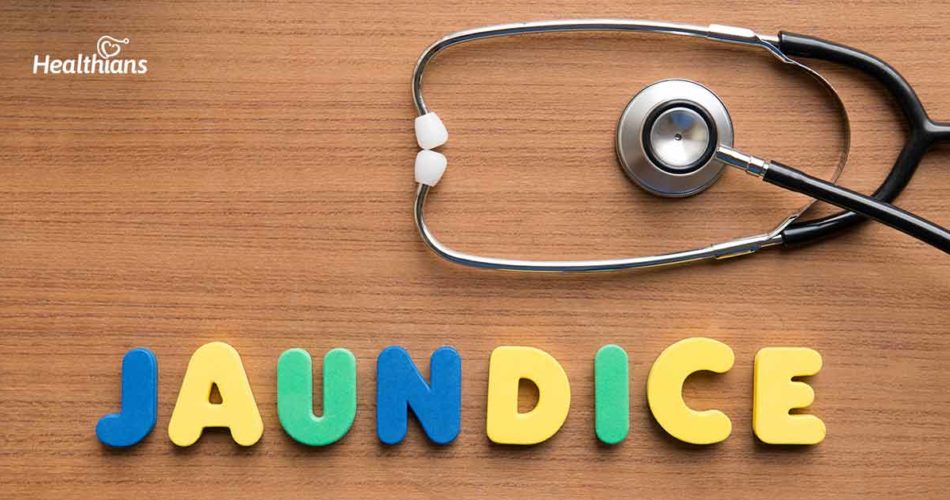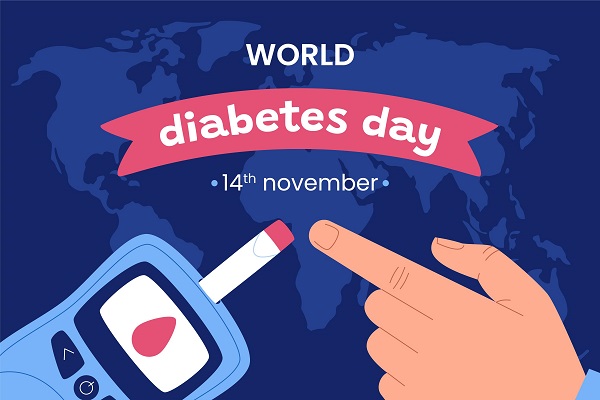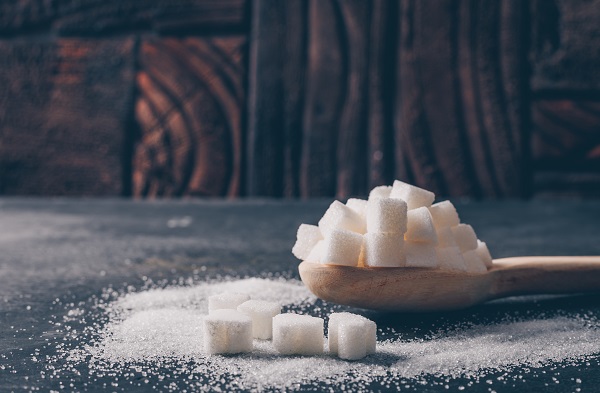Contributed by: Healthians Team
What is jaundice?
Jaundice is a serious condition in which the color of your skin, whites of the eye (sclera), the mucous membrane, and bodily fluids turn yellow. This condition occurs when the level of bilirubin in your blood crosses 2.5 to 3 mg/dL (milligrams per deciliter) and enters your bile duct in the liver where bile juice is produced.
Bilirubin is a yellow color waste substance formed in your bloodstream from the dead red blood cells (RBCs) and usually passes through your bile duct via urine or stool.
Jaundice, an excess of bile pigment in the blood, is a symptom of an underlying disease rather than a disease itself. If you experience any symptoms of the condition, you must undergo an early diagnosis to ascertain the disease giving rise to jaundice.
What are the symptoms of jaundice?
It is possible in some cases that you may not experience jaundice symptoms when it initially affects you but it can damage your body if not discovered in time. Hence, it is vital to keep an eye out for the symptoms of jaundice, which include:
- Burning sensation while peeing
- Dark-colored urine
- Pale or clay-colored tool
- Frequent abdominal pain
- Repeated episodes of fever
- A sensation of chills and cold sweats
- Unintentional weight loss
- Itchy and irritating skin
- Always feeling tired
- Vomiting and fever
Some symptoms of jaundice that might indicate an underlying serious disease include:
- Inability or difficulty in sleeping
- Suicidal thoughts
- Obstruction in the brain functions
- Symptoms of Hepatitis A, HepB, or Hep C
- Swollen legs and stomach due to fluid build-up
- Gallstones and tumors
What causes jaundice?
Jaundice affects you when the bilirubin levels rise and enters your liver through your bloodstream, it gives rise to conjugated bilirubin- a condition in which other enzymes and chemicals that are present in your liver attach themselves to the bilirubin.
The conjugated bilirubin then finds its way to your bile (a fluid formed in your liver that processes digestion) and leaves your body through stool or urine, causing pale-colored stool or dark-colored urine, which surmounts to jaundice.
The most common diseases that can cause jaundice are:
- Malaria: A blood infection due to the Anopheles mosquito bite
- Sickle cell anemia: A disorder that results in the breakdown of red blood cells
- Leptospirosis: A contagious bacterial infection that spreads from animals or their feces and urine
- Hepatitis: Liver inflammation due to the use of infected needles, contaminated water or food, bodily fluid exchange, and sexual transmission
- Alcoholic hepatitis: Liver damage due to long term alcohol abuse
- Liver cirrhosis: A condition in which your liver gets scarred due to long-term alcohol abuse, drugs, or infection
- Gallstones: Excessive calcium deposit in the gallbladder that obstructs the bile duct
- Pancreatic cancer: Cancer of the pancreas
- Pancreatitis: Infection of the pancreas
- Biliary atresia: A genetic disorder that causes thin or no bile duct
In most cases, jaundice does not require medical intervention. However, aggravated jaundice cases should not be left untreated and medical attention should be availed immediately, without which serious health complications could arise.
How is jaundice diagnosed?
When diagnosing jaundice, the doctor will check your bilirubin levels as it is the most important parameter for the diagnosis. Your stomach will be checked for firmness or tenderness of the liver via a physical examination. Your doctor might also recommend additional diagnostics to check whether you have jaundice or not. Some of these tests include:
- Liver function test (LFT): Also known as a liver panel, an LFT is a blood test that helps in determining whether or not your liver is functioning properly. This test is also ideal to determine the presence of jaundice.
- Bilirubin test: A bilirubin blood test helps in determining the bilirubin levels in your blood. If the reports indicate that the bilirubin level is more than 2.5 to 3 mg/dL, you probably have been affected by jaundice.
- Complete blood count test (CBC): A CBC helps in determining the count of red blood cells, white blood cells, and platelets in your body along with bilirubin levels to ascertain the presence of jaundice.
- Hepatitis test: A hepatitis test can help in determining a wide range of liver infections that can lead to jaundice.
How can you prevent jaundice?
Since jaundice is completely related to liver functions, hence, maintaining a healthy liver can protect you from jaundice. Here are a few tips that you can follow to maintain and improve your liver health:
- Eating a healthy diet
- Consuming a moderate amount of alcohol or no alcohol at all (recommended)
- Avoid unprotected sex and sharing your essentials
- Exercise regularly and maintain a healthy weight
- Get early diagnosis if you experience any symptoms
Diet tips to manage & ease the symptoms of jaundice
Jaundice is not the end of the world. It’s a curable and manageable condition. Here are a few diet tips you should adopt to ease the symptoms of jaundice and get on the road to recovery:
- Drink at least 2-3 liters or up to 8 glasses of water every day
- Eat more green vegetables and reduce red meat intake
- Honey, pineapples, oranges, papaya, and mango can help control the bilirubin levels
- Nuts can help in detoxifying your liver
- Reduce or avoid foods rich in iron
- Decrease the intake of sugar and salt
- Avoid having foods high in fat
Final thoughts
You now know that jaundice is not a disease but a condition that occurs due to an underlying illness. To manage this condition, it is important that at first, you examine the above-mentioned symptoms, get an early diagnosis, and start on the above-suggested diet.
Did this article meet your need and are your questions answered? Tell us what you think in the comment section and reach out to us if you still have any unresolved queries.




